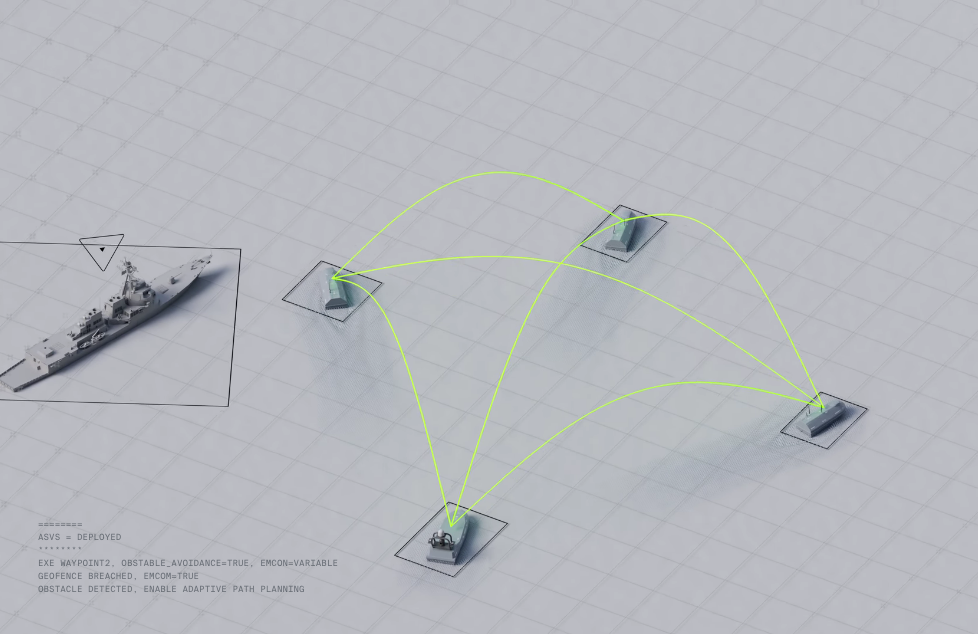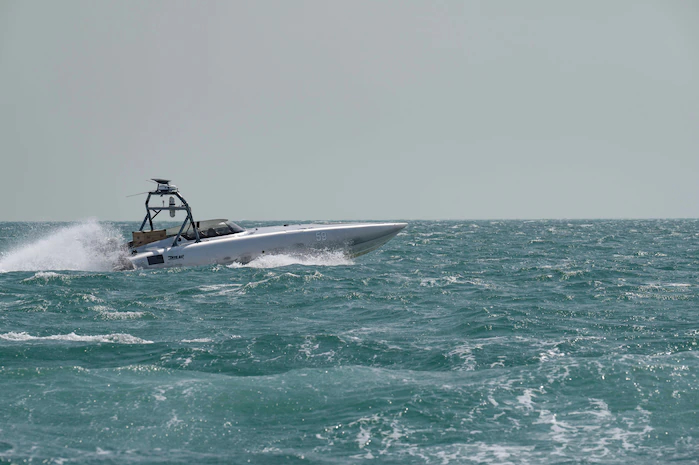SAM LAGRONE AND AARON-MATTHEW LARIOSA

The U.S. military has taken the next step in building thousands of lethal sea-borne attack drones that could be key to deterring a Chinese invasion of Taiwan.
On Monday, the Defense Innovation Unit put out a solicitation for companies to submit pitches for small unmanned surface vehicles that could tie into the Pentagon’s Replicator initiative, a defense official confirmed to USNI News on Tuesday.
DIU’s PRIME – Production-Ready, Inexpensive, Maritime Expeditionary – will buy drones in bulk to respond to a Navy operational need for small autonomous attack craft capable of “intercepting” enemy vessels at high speeds.
“This is their effort to try to get some new kinetic, lethal USV[s] fielded that can be employed probably in a western Pacific context – maybe the Strait of Taiwan,” naval analyst Bryan Clark told USNI News on Tuesday.
“They want to go out to the commercial world and say, ‘Alright, what do you got in terms of kinetic, lethal USVs that can be produced at scale’.”
The Navy has been quietly experimenting in the Pacific with a lethal drone concept called “hellscape” that would disrupt an amphibious invasion of Taiwan with a combination of loitering munitions and lethal attack drones. The lethal and autonomous mass would throw off a synchronized invasion, sow confusion and chaos in the strait and buy time for the U.S. and Taiwan to bring more forces, USNI News reported last year. The program was inspired in part by the low-cost lethal surface drones developed by Ukraine and built with off-the-shelf components, USNI News understands.
The PRIME USVs are a departure from the large and medium USV demonstrators currently deployed by the Navy with a lower endurance and a range of 500 to 1000 nautical miles.
The requirement calls for the drones to autonomously transit through contested areas, loiter in assigned areas, detect surface threats and then sprint to at least 35 knots to intercept enemy vessels. The drone should also be capable of working with others in groups to “execute complex autonomous behaviors that adapt to the dynamic, evasive movements of the pursued vessel,” according to the solicitation.
Though not explicitly stated in the solicitation, the nature of the small USVs sprint and intercept phases is akin to a suicide surface attack drone, such as those seen in Ukraine.
The solicitation listed nice-to-haves, like the ability to carry small unmanned aerial systems to either help spot enemy vessels or assist other missions, and the capacity to support other sensors and weapons. The drones could deploy from well decks or boat davits and be stowed long-term in a standard shipping container.

Devil Ray unmanned surface vehicle, equipped with a Lethal Miniature Aerial Missile System, operates in the Persian Gulf, Oct. 26, 2023.
The solicitation covers the specialized software needed for the Collaborative Intercept Capability, which will allow the drones to autonomously swarm with other USVs to hunt their targets.
While this solicitation is the first connected to directly Replicator’s efforts for the Navy, according to the defense official, the service and industry have been experimenting with, and in some cases even deploying, SUSVs for years.
At the annual Surface Navy Association symposium earlier this month, Naval Sea Systems Command showed off a demonstration held in the fall by U.S. 4th Fleet in which Textron’s Common Unmanned Surface Vehicle armed with a Korean rocket system hit a target in a kill chain demonstration. USVs from Saildrone and MARTAC have also been deployed in demonstrations and Task Force 59 in U.S. Central Command. In November, a MARTAC Devil Ray USV launched loitering munitions in Exercise Digital Talon in the Middle East.
Texas drone company Saronic has also developed swarm boat concepts in line with the solicitation. In a concept video on its website, four USVs airdrop into a region and coordinate with two destroyers to detect and destroy an enemy landing craft.
Aside from the Navy, the Marine Corps has also been exploring armed USVs under Force Design 2030. One of the service’s first USV programs, the long-range USV, or LRSUV, was developed through former commandant Gen. David Berger’s guidance. Berger floated the idea where large amphibs as motherships for unmanned systems in the future.
Clark said that while the Replicator initiative called for thousands of drones, this first group of drones could still be effective in the dozens.
“Dozens of these unmanned surface vehicles, maybe a hundred of these unmanned surface vehicles, that’s a lot,” he said. “But it seems like that’s within the scope of what a commercial manufacturer could do within 18 months.”
No comments:
Post a Comment